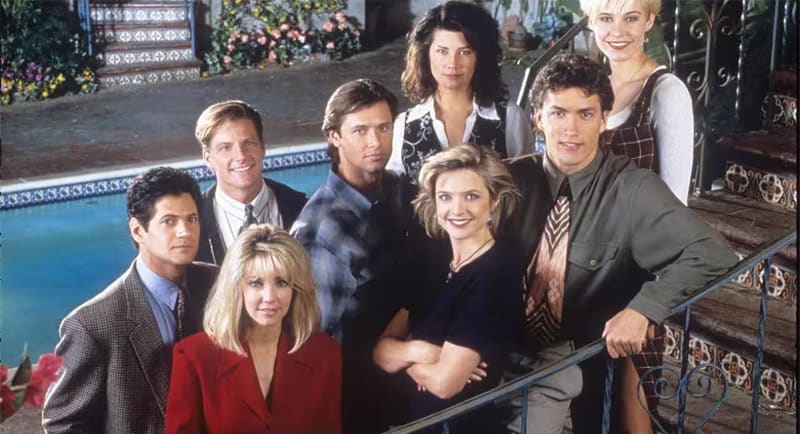By Tyler Greer: GM Client Strategy, Solutions and CPM – Newsamp VIC, SA and WA
A thousand years ago, in a place we called the 90s, there was a TV show called Melrose Place. Whilst it concerned the scandalous events of an LA apartment block as its deeply flawed residents fought, plotted, pursued careers, and generally slept with anything that drew breath, the real power of the show was what it did for Monday nights. For these were the days of appointment viewing and if you wanted to watch it, you tuned in then and only then. Annoying? A little. Culturally significant? Absolutely.
Cultural Relevance (yes, in capitals) has been a media/advertising thing for a while now. It describes a brand’s ability to plug into and, therefore, leverage, the cultural mood of the moment. It requires speaking to the audience for whom the particular cultural space has meaning in a way that holds true to that mood. And it requires at least one large portion of the population experiencing the same thing at the same time.
Cultural Relevance, according to joint research between Manga and the brand formerly known as Twitter, suggests that cultural relevance accounts for 25% of purchase decisions. Kantar, in their Cultural Vibrancy study, argues that one of the most important assets brands can have to drive growth is cultural relevance. The word zeitgeist gets used a lot.
In the case of Melrose Place, the fixed viewing time saw the rise of a Monday night culture that otherwise wouldn’t have existed. Bars and pubs would host Melrose Monday, broadcasting the episodes. Groups of girls, lots of them, would attend. I know this because I was one of the groups of boys, even more of them, who would also therefore attend. Whether a hangover/regretful Tuesday was also a thing is best left to history. The point is, that venues made the most of the cultural phenomenon that was Melrose Place.

Melrose Place
At any one time, we exist in the midst of cultural moments. There are large, immediate ones, such as the recent impact of the Women’s World Cup and the associated celebration of the Matildas. There were lots of reasons to embrace the moment – the fact that it was a World Cup, the rise of women’s sport in general and our team specifically, good old patriotism, but perhaps more importantly, the feeling that comes from a moment in which everyone is excited and interested at the same time. It’s irresistible and very human. Sport is good at that.
But there are other cultural touchpoints that operate at a slower pace; trends that move more slowly but which dictate how cultural spheres operate and without understanding these, brands are unlikely to find purchase with audiences. Food, fashion, sports fandom, travel, and so on – around each of these sits a culture, but that culture is never static. These spaces change to accommodate taste, technology, budgets, world views, and more. It is understanding these that really matter for brands hoping to hold an authentic conversation with audiences.
Let’s take a cultural moment that we collectively experience yet which is subject to changing trends: Christmas. Annual, all inclusive, everyone in at the same time. It mostly follows the same rhythm for all of us, including gift purchasing and giving, decorating, hosting or being hosted for lunch, bad songs, with the inclusion of kids adding another element of waking early and making a mess. Yet even this moment is suffused with trends that are critical for brands to understand.
The recently published Food Trends Forecast 2024 report from News Corp Australia shows us clearly how Australians are thinking about Christmas food and how that changes regularly. Post-covid we are keener to entertain at home than ever, and with an emphasis on a more casual experience. Last year that led us to coin the term Luxe Casual – relaxed yet still premium. This Christmas, engaging those planning for the moment without understanding the cultural impact of cost of living pressure is likely to be perceived as tone deaf.
See Also: Taste’s Laura Simpson dishes on latest Food Corp trend forecast
Travel too is both universal and deeply trend based (and, according to my social media, that trend is every person I have ever met lounging around in southern Italy). Ten years ago we had cheaper flights, less focus on environmental impact, wellbeing, and specific experiences. Understanding how the culture around travel is shifting allows brands to move beyond simple destination promotion and tap into the relevant desires of potential customers.
At News Corp Australia, where travel represents a significant part of our business, understanding evolving Travel Trends and culture is essential. Destination marketing, for example, is today less about the location itself and how it fulfils desires both physical and mental. From delivering the personal needs of wellness and mindfulness to experiences built around food and wine, these are the entry points for travel planning and they are constantly in flux. For brands, knowing them and what to do with them can be the difference between tourists and tumbleweeds.

Distinct categories can intersect as a result of cultural shifts, or their merging can help set them. The blending of luxury, health and travel offers a good example, with wellness experiences themselves being a marker of prestige. Where three quarters of the luxury audience are looking for physical and mental wellbeing on their luxury escapes, brands that can deliver these and cultivate a reputation for doing so, will thrive.
Moreover, understanding the channels that drive that interest is just as important. Installing lights and ceilings in restaurants to make them more ‘grammable’ helps locations drive cultural heat; shows like White Lotus provide places like Sicily a moment of high desirability; at News Corp Australia, we know that focusing on contemporary family needs through brands like Kidspot can help drive destination desirability.
We may think of this approach to cultural relevance as fast and slow. Brands wishing to capture a zeitgeisty moment need to be nimble, agile, and all the other words we like to use but never employ. It means reacting creatively at speed to leverage a moment on which broad culture is fixated. They are significant but they are time sensitive and short lived. Vegemite has in recent years proven the master of this.
A slower version of this means maintaining ongoing applicability in a chosen space. Cultural moments do not exist in a vacuum, and finding relevance means understanding the way they exist in the world for those that are interested in them. If we think of cultural relevance as referring solely to massive, national events we are missing the opportunity to engage audiences in ways that matter to them, and there are lots of those operating all the time. As always, it lies in the data and our ability to read it and make use of it. Which, incidentally, is another on-going cultural trend.
Monday nights on the booze is, thankfully, no longer a trend. But identifying those that are, and grasping the trends that are driving them or informing them, is one of the most valuable investments any brand can make.
–
Top Image: Tyler Greer
